A fillet knife is a specialty tool for filleting fish. Here is how to choose one that will fit your needs.
by Leon Pantenburg
After a few weeks on the Mississippi River, my gear was pared and refined for lean, efficient cruising. (To read the story of my end-to-end Mississippi River canoe trip, click on Canoe Voyage.) All the extra fishing gear I didn’t need was sent home.
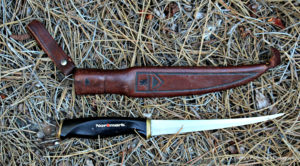
This is the fillet knife I carried all the way down the Mississippi River. It has filleted thousands of fish.
I carried two knives for the rest of the six-month journey: a Buck folding hunting knife rode in a sheath on my belt and a filleting knife was in my tackle box.
The Buck handled everything from spreading peanut butter to cutting apples to beheading fish.
My fillet knife was a Fisckar with a six-inch blade. It worked very well for filleting pan-sized fish and was used at least once a day to prepare whatever fish I caught.
A good specialty knife makes filleting fish easy. Picking the right one is not that hard.
To start with, a fillet knife is a specialized tool, featuring a flexible, thin blade and it wouldn’t be my first choice as an all-around survival knife. The long, thin blade that makes it good for filleting means it won’t be the best choice for skinning big game animals. The fillet blade would also not hold up well under prolonged use for whittling, batoning wood or every day cutting chores.
Here’s what to look for in a good fillet knife:
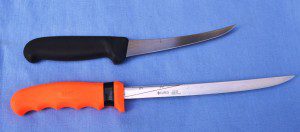
The Forschner six-inch boning knife (top) with a flexible blade is a fine tool for filleting fish; the Cutco shown below it has a seven-to-nine inch adjustable blade. (Pantenburg photo)
Flexible blade: The blade needs to be sharp, but flexible, so it moves easily around bones. But it needs enough backbone, so it can cut through small bones, such as those pesky “Y” bones in northern pike.
Non-slip handle: A smushy, easy-to-grab handle that doesn’t get slippery is a really good idea for safety. Once some fish guts or slime get on the knife, you don’t want the handle to be hard to hold.
I have found that micarta, even though smooth, gets almost tacky when wet. I like micarta handles and have them on several of my user knives.
Easy to sharpen:A fillet knife will get used for a lot of cutting, and will have lots of opportunities to get dull. The steel
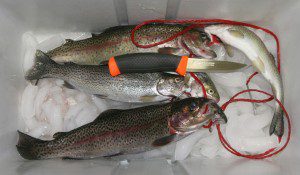
This Mora’s soft, non-slip handle was safe to use, even when covered with slime, scales and fish guts.
needs to hold an edge well, but still be easy to sharpen. While I generally prefer carbon steel because it’s easier to sharpen, stainless may be a better choice in a blade that will be constantly exposed to blood, fish scales and water.
Appropriate blade length: Lengths of blade, IMO, should match the size of the fish. A five-inch is about the minimum for smaller panfish, and I like a six-to-seven inch for medium fish, and a nine-inch for steelhead, salmon and larger saltwater fish.
My six-inch Forschner boning knife is a first cousin to a fillet knife, and I use mine a lot for fish filleting. The Forschner is designed for meat cutting, but the only difference I can see is that the boning blade is a little less flexible than that of a filleting blade.
Like all survival tools, the one that you like best and that you can use most safely, is your best choice!
Please click here to check out and subscribe to the SurvivalCommonSense.com YouTube channel – thanks!

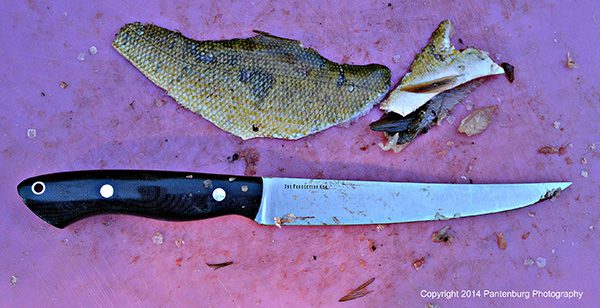
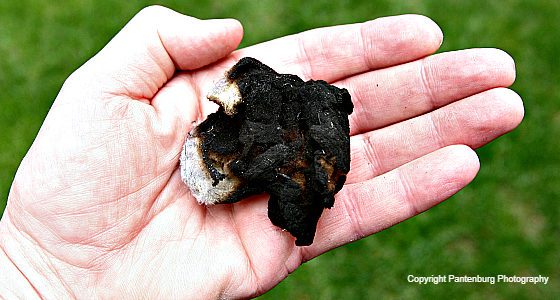
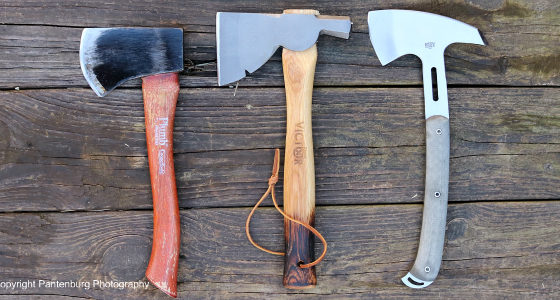
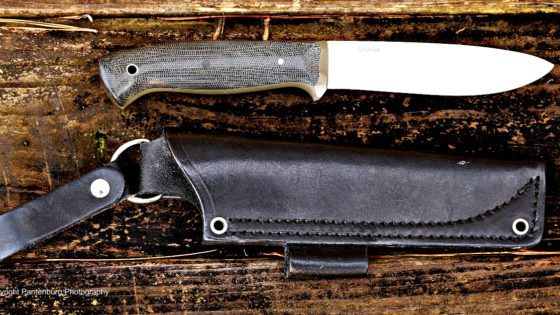
Leave a Reply